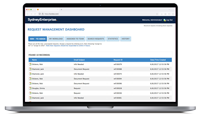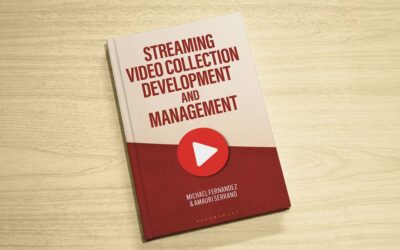Interview with the Authors: Leachman and Libby on Training Library Staff
Lauren Hays
Emily Leachman and Garrison Libby are the authors of A Complete Guide to Training Library Staff available later this year from Bloomsbury Press.
My interview with them is below.
1. Please introduce yourself to our readers.
Emily: I am Emily Leachman. I started volunteering in libraries when I was eleven! I have spent the last eighteen years at various libraries in North Carolina, including both public and community college libraries. I have always been interested in training library staff and that has led to chairing the Library Training Committee at Central Piedmont Community College since 2016. I think staff training plays a huge role in employee satisfaction, and a well-trained staff leads to a better patron/end user experience.
Garrison: I am Garrison Libby. Currently I work as Head of Research Services at the University of North Carolina at Charlotte. Prior to that, I worked in a variety of community college libraries in reference, instruction, and management. Working in managerial roles in particular helped me to see and understand just how important it is to keep staff well trained and ready to adapt to the ever-evolving library landscape.
2. Briefly summarize A Complete Guide to Training Library Staff.
A Complete Guide to Training Library Staff sets out to work through every stage of staff training needed within a library in the course of an employee’s tenure. We walk through every training need we can think of, from what a new employee needs to know before they even start, a thorough onboarding process to get a new employee acclimated to a new workplace and new job, through multiple types of ongoing training during employment, and what needs to be thought of when an employee leaves. We wanted to give the big picture of what a training life cycle looks like, while also making it easy for readers to choose their priority training needs and start there.
3. Why did you decide to write this book?
Having worked in a variety of libraries, both of us saw how important good training is in keeping libraries running smoothly. It is not something to do once when a new employee joins and then never reinforced. Instead, we feel it is something integral across the entire employee experience in the library. We wrote this book to help library staff members build a robust and thorough training program that helps employees stay up to date and feel comfortable and confident in their jobs. We also wanted to provide ideas for how to conduct training, whether it is the tools used for facilitating or how to go about actually conducting training. We hope it will spur more librarians to reimagine and strengthen how they go about staff training and employee development.
4. How have training needs changed over time?
That library staff need training has not really changed. Rather, the topics that need to be covered change as libraries and the world change. For example, you did not see training on using Artificial Intelligence in the library until recently, and now it is a common topic. Additionally, the methods and options for delivering training have changed. While webinars and online training have been around for a while, COVID really showed us how much we can do online, both in real time (synchronous) and recorded (asynchronous). There are far more tools for facilitating online training than there were—as well as more companies and associations offering online training opportunities.
5. How do you see training needs changing in the future?
It’s hard to predict exactly how they’ll change in the future, but what is easy to predict is that they will change—and probably in unexpected ways. We are still only a few years out from the pandemic, which totally upended the way many of us work. More recently, we have seen generative AI come onto the scene, which is an entirely new branch of technology that will probably influence all our work in unforeseen ways. You never know quite what is coming down the pipeline, so having an intentional training program will help library staff adapt to those changes as they come.
6. What are two things you hope all readers take away?
Training should not be one and done, never to be thought of again. Librarians have training needs through their entire term of employment and it is important to have a framework that supports employee training and professional development needs continuously.
Training does not have to be scary. You can take many different approaches to training that will fit the size, type, and scope of your library and the needs of your staff. You can tailor the method, frequency, and style to what works best. The important thing is actually doing it!
7. Is there anything else you would like to share?
We really wanted to write something that is practical and easy to implement. Both of us have experience creating robust training programs and we have included specific tools, checklists, and real-life examples we hope readers will adapt for their own libraries.
Lauren Hays
Dr. Lauren Hays is an Assistant Professor of Instructional Technology at the University of Central Missouri, and a frequent presenter and interviewer on topics related to libraries and librarianship. Please read Lauren’s other posts relevant to special librarians. Learn about Lucidea’s powerful integrated library systems, SydneyDigital, and GeniePlus, used daily by innovative special librarians in libraries of all types, sizes and budgets.
**Disclaimer: Any in-line promotional text does not imply Lucidea product endorsement by the author of this post.
Never miss another post. Subscribe today!
Similar Posts
Growing Your Leadership Skills: 7 Tips for Special Librarians
Great library leaders aren’t born—they’re made through learning self-reflection and practice. Here are seven strategies to help you grow and lead with impact.
Keeping Up with Copyright and Generative AI: What Special Librarians Need to Know
As generative AI becomes more prevalent copyright law is evolving to address its impact. A new report from the U.S. Copyright Office provides guidance on what is (and isn’t) copyrightable.
Understanding Shadow AI: Risks Costs and Governance
AI can enhance search discovery and efficiency but unsanctioned adoption—known as “shadow AI”—can lead to budget overruns and compliance risks. Here’s how to evaluate AI pricing models and build a governance strategy that balances innovation with cost control.
Interview with an Author: Fernandez on Streaming Video Collection Development
As demand for streaming video in libraries grows so do the challenges of managing access budgets and licensing. Co-author Michael Fernandez shares key insights from his book “Streaming Video Collection Development and Management”.







Leave a Comment
Comments are reviewed and must adhere to our comments policy.
0 Comments